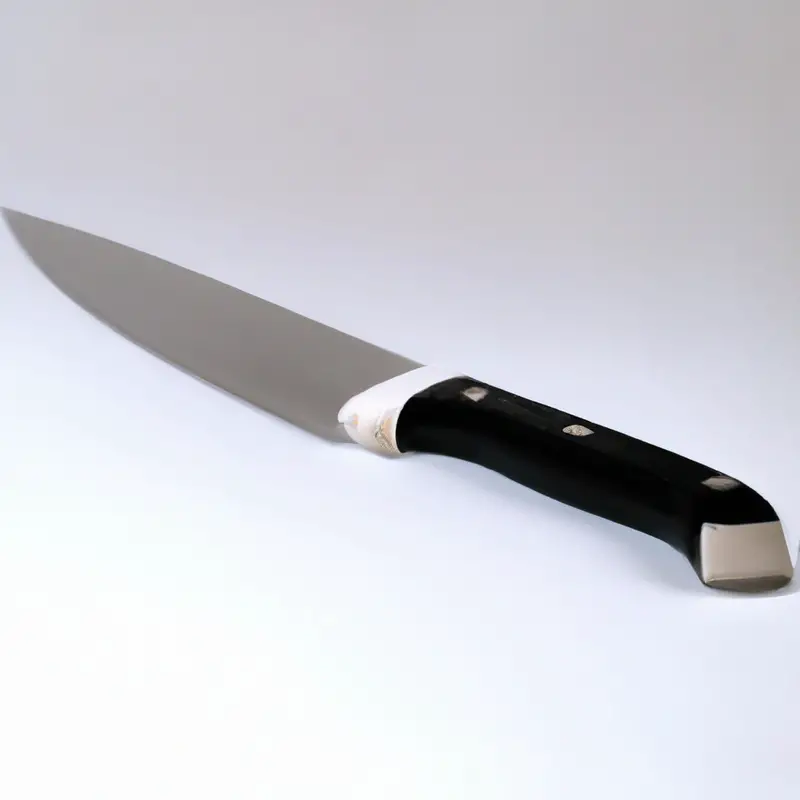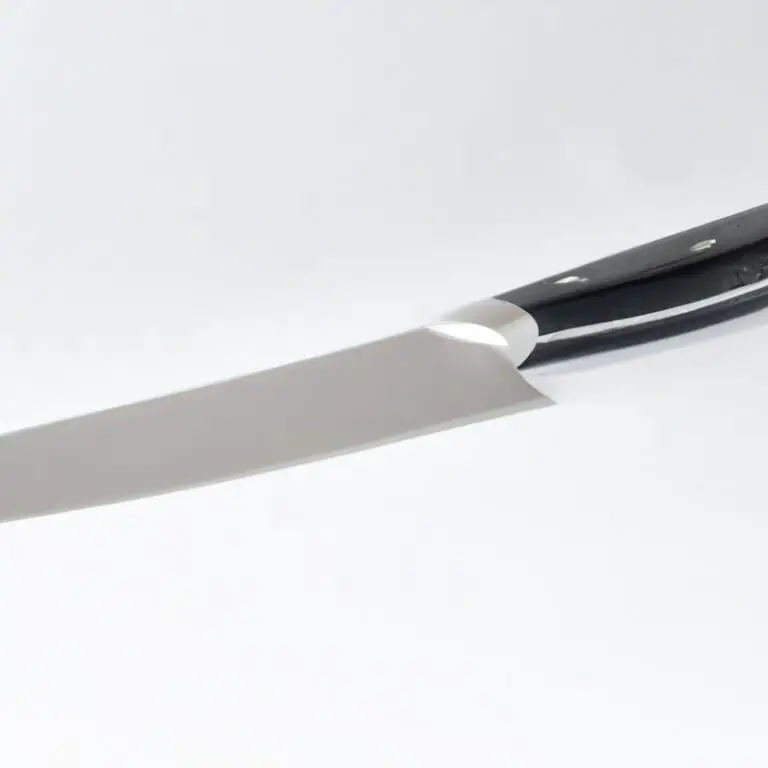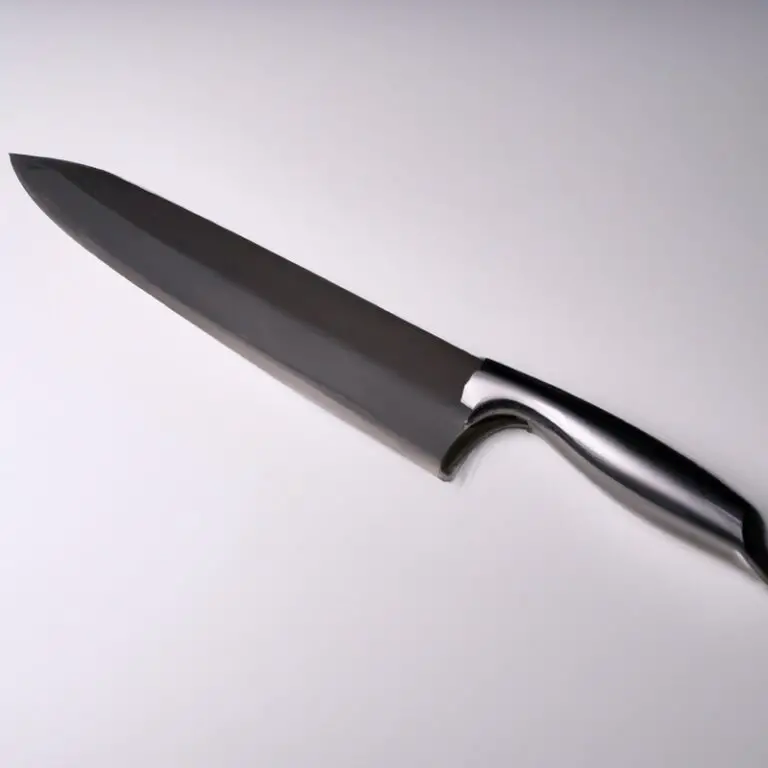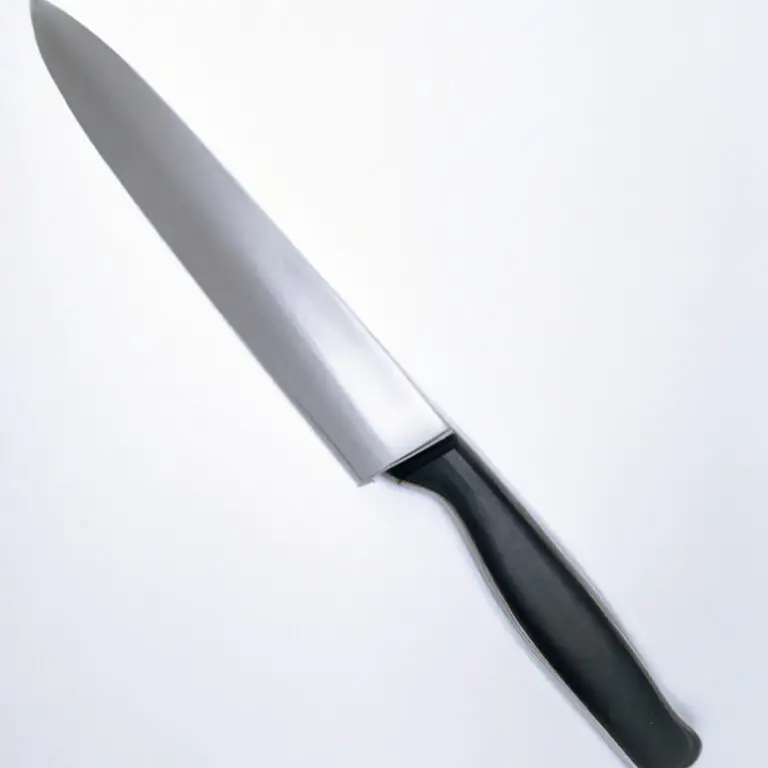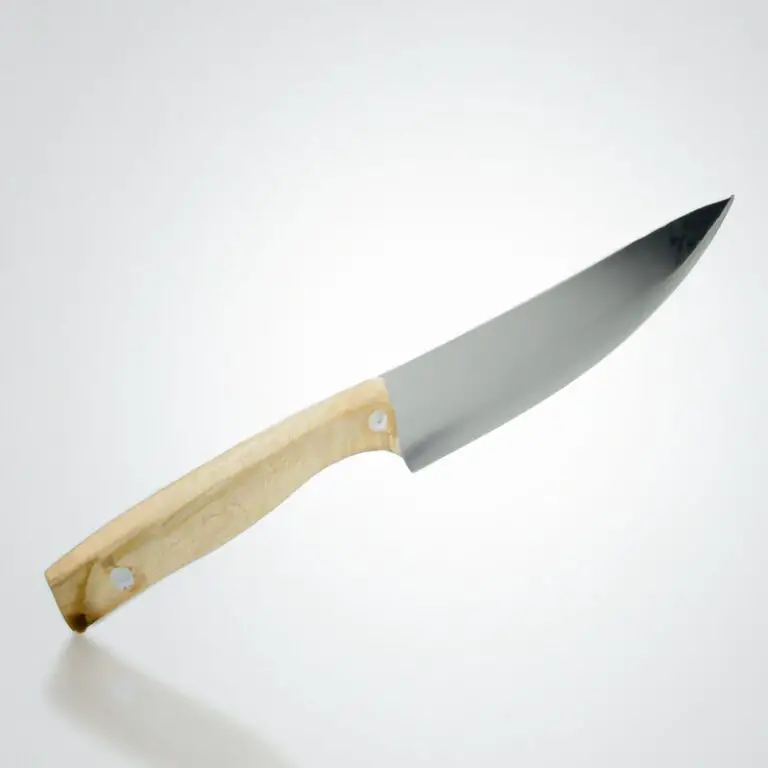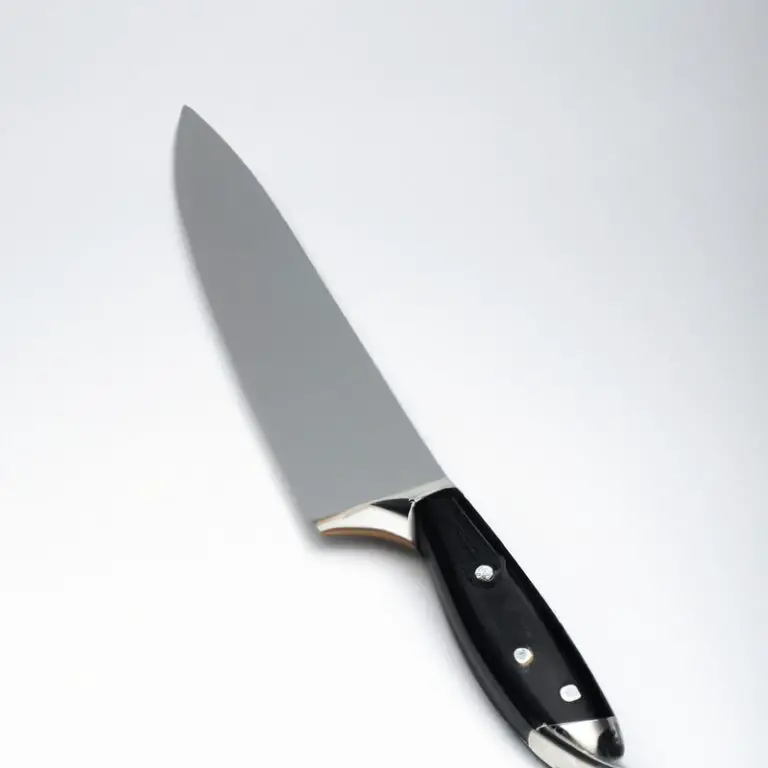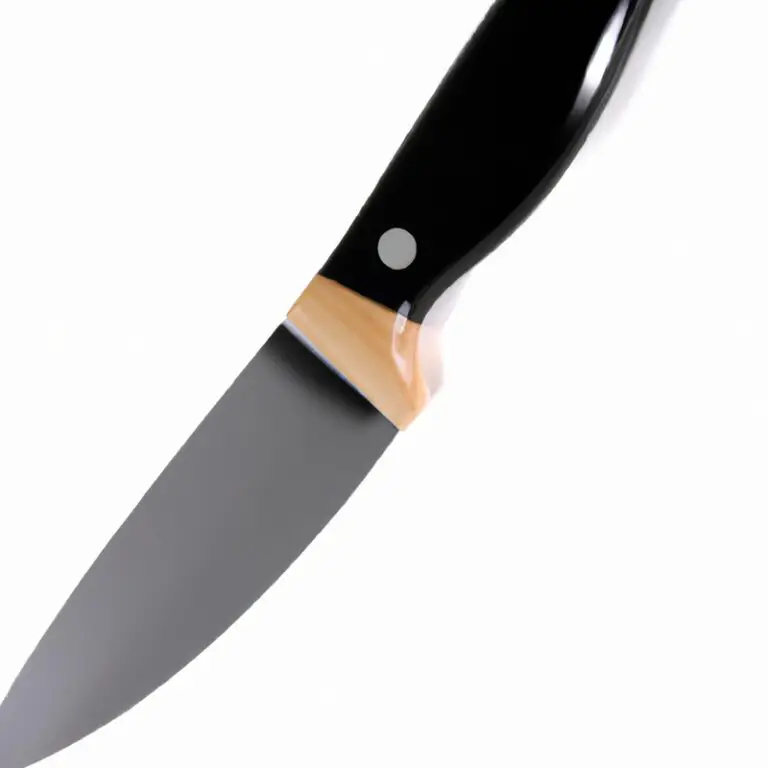What Are The Different Types Of Grinds Used In Chef Knife Blades? Spice It Up!
Key Takeaways:
- The type of grind used in a chef knife blade affects its function and durability.
- The most common grinds include hollow, flat, and convex, each with their own benefits and drawbacks.
- Understanding the different grinds can help you choose the best chef knife for your needs.
- Maintaining your knife’s grind through proper sharpening techniques can extend its lifespan and ensure optimal performance.
If you’re looking to upgrade your kitchen game, understanding the different types of knife grinds is essential. As a chef, I’ve seen firsthand how the wrong grind can affect everything from precision to performance.
In this article, we’ll break down the various types of knife grinds – from the most popular bevel grind to the razor-sharp Japanese grind.
By the end, you’ll have a better understanding of which grind is best suited for your culinary needs. So, let’s dive in!
| Type of Grind | Description |
|---|---|
| Flat Grind | This grind is a simple V-shaped grind that runs from the edge to the spine of the knife in a straight line. It is easy to sharpen and offers good slicing performance, but it may not be as durable as other grinds. |
| Hollow Grind | A hollow grind is concave and creates a thinner edge than a flat grind. This grind is great for smooth slicing and is easy to sharpen, but can be more difficult to maintain and may be less durable than other grinds. |
| Convex Grind | A convex grind is a smooth curve that runs from the spine to the edge of the knife. This grind offers excellent durability and slicing performance, but can be more challenging to sharpen. |
| Chisel Grind | A chisel grind is a single bevel grind that is only sharpened on one side of the edge. It is commonly used in Japanese-style knives and offers exceptional slicing performance, but can be more challenging for beginners to use and maintain. |
| Double Bevel Grind | A double bevel grind is the most common grind found in Western-style knives. It features a V-shaped grind with two symmetrical bevels on either side of the edge, which provides excellent slicing performance and ease of maintenance. |
The Basics of Knife Grinds – Understanding the anatomy of a chef’s knife
Understanding the anatomy of a chef’s knife is crucial to comprehend the different types of knife grinds that are available. A chef’s knife grind refers to the angle and shape of the blade’s cutting edge.
There are various types of knife grinds, including bevel, convex, flat, hollow, double bevel, chisel, Scandinavian, and Japanese.
Each grind offers its unique advantages and disadvantages depending on the task at hand. For example, a convex grind is an excellent option for heavy-duty tasks as it provides a robust edge.
In contrast, a flat grind is ideal for precision slicing and dicing.
The right grind for the job depends on the task, material, and personal preference. Knowing which type of grind to choose can ensure that you have the proper tool for the job, making your work more efficient and enjoyable.
In summary, understanding the basics of knife grinds is essential to select the right chef knife for your needs.
Common Types of Knife Grinds – Bevel, Convex, and Flat Grinds
Three common types of knife grinds used in chef knife blades are bevel, convex, and flat grinds. A bevel grind is the most popular type of knife grind used in chef knives due to its versatility and ease of sharpening.
This grind features two flat planes meeting at an angle to form a sharp cutting edge.
A convex grind features a curved cutting edge that gradually merges into a thicker spine, providing a more robust edge for heavy workload tasks, such as chopping and butchering meats. A flat grind is characterized by a single flat plane extending from the spine to the edge of the blade.
This type of grind is ideal for slicing and dicing with precision, making it a common choice for many chef knives.
When selecting a chef knife based on grind, it is important to consider the task, material, and personal preference. Each grind has its specific strengths and weaknesses, so it is crucial to choose the one that best fits the job at hand.
Proper care and sharpening techniques are also essential for maintaining a knife’s performance and longevity.
However, seeking professional sharpening services may be necessary to preserve the blade’s integrity over time.
Bevel Grinds – The Most Popular Type of Knife Grind for Chef Knives
Bevel grinds are the most popular type of knife grind for chef knives. This is because it offers a versatile edge that can be used for a range of tasks, including slicing, dicing, and chopping.
Bevel grinds are characterized by a v-shaped edge that tapers down to the blade’s apex.
The primary bevel can be ground at a variety of angles, with a wider angle providing a more robust edge and a narrower angle providing a sharper edge. The secondary bevel, or micro bevel, is added to increase durability and resistance to chipping.
For beginner chefs, a bevel grind can be a good starting point due to its simplicity and durability.
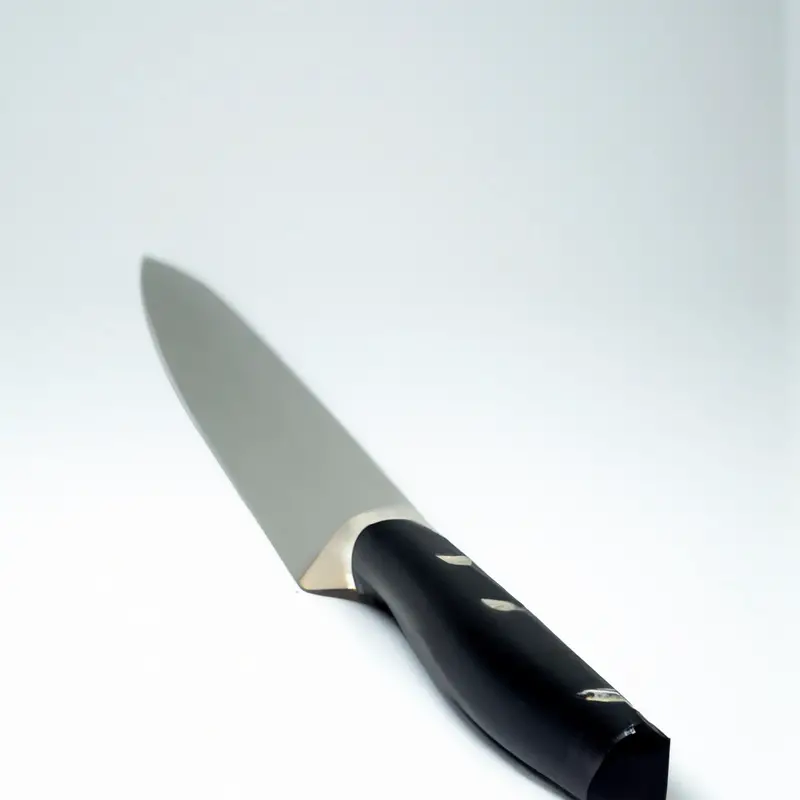
Convex Grinds – A more Robust Edge for Heavy Workload Tasks
Convex grinds offer a more durable and robust edge, making them the perfect choice for heavy workload tasks. This type of grind distributes the blade’s thickness towards the edge, creating a convex shape that provides better stability and strength.
It also allows for more edge retention, which means less frequent sharpening.
Because of their durability and strength, convex grinds are commonly used in hunting and survival knives. They excel at chopping wood, breaking down bones, and other heavy-duty applications.
However, they may not be the best choice for precision cutting tasks, as the convex shape doesn’t provide the same level of control as other grinds.
Overall, if you need a blade that can handle tough jobs and withstand heavy use, a knife with a convex grind might be the perfect fit.
Flat Grinds – Slicing and Dicing with Precision
Flat grinds, as the name suggests, have a flat blade with a V-shaped edge. This grind is perfect for slicing and dicing with precision.
The thin blade allows for better control and maneuverability, making it an ideal choice for delicate tasks like filleting fish or preparing vegetables.
Flat grind knives are known for their sharpness and ease of maintenance, which makes it a popular option for many chefs. These knives are also quite versatile and can handle different types of cutting tasks.
Overall, if you are looking for a knife that can slice and dice with precision, a flat grind knife is a great choice.
Hollow Grinds – Razor-Sharp Edges for Ultimate Control
Hollow grinds are a popular type of knife grind in chef’s knives as they provide ultimate control and razor-sharp edges. This grind features a concave bevel between two flat surfaces, creating a characteristic “dished-out” appearance.
The hollow grind excels in precision cutting tasks like filleting, skinning, and slicing.
It’s important to note that the thinner edge geometry of a hollow grind makes it susceptible to chipping and dulling, requiring regular maintenance to avoid issues. If you’re seeking a chef’s knife that delivers ultimate control and precision, a hollow grind could be the perfect fit for you.
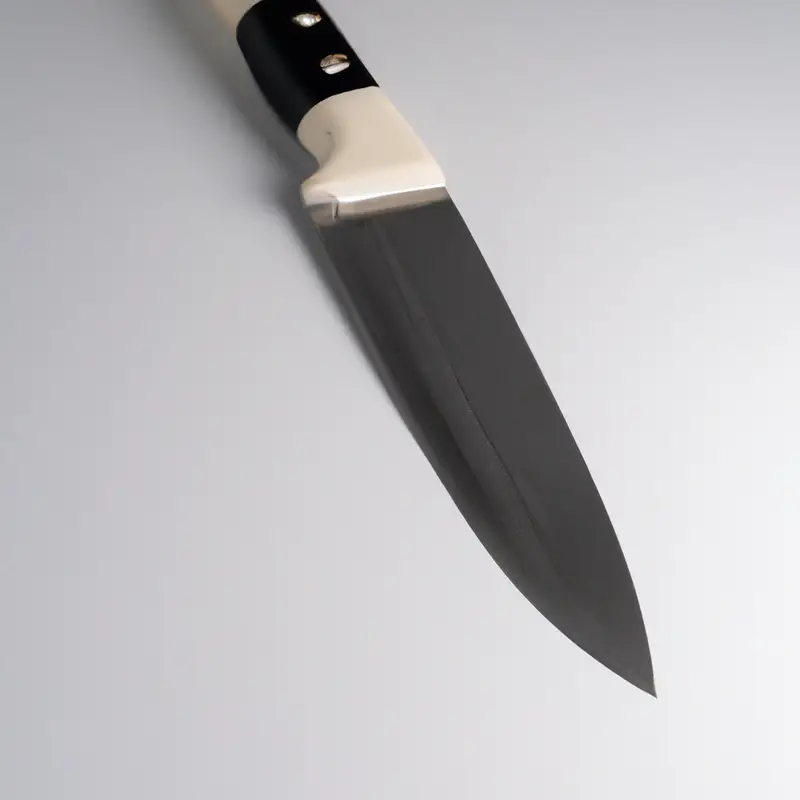
Double Bevel Grinds – The Best of Both Worlds for Versatility
Double bevel grinds, also known as compound bevel or symmetrical grind, are widely used in most Western-style chef knives. They offer a versatile edge that performs well for both slicing and chopping tasks.
This type of grind features two angled bevels on either side of the cutting edge, creating a V-shaped edge.
The bevels are typically lower and wider than those found on a conventional single bevel knife, providing a sturdier edge that can withstand high volume use. One of the main advantages of double bevel grinds is their versatility.
They strike a balance between the precision of a flat grind and the durability of a convex grind.
This makes them an ideal option for general purpose kitchen tasks, from chopping vegetables to slicing meat. Additionally, double bevel grinds are typically easier to sharpen than single bevel knives due to their symmetrical blade geometry.
They are also easier to maintain and can be honed on a sharpening stone or honing steel.
For those looking for a versatile and durable option that is easy to maintain, double bevel grinds are an excellent choice for a chef knife.
Chisel Grinds – A Single Bevel Option for Asymmetrical Cutting
Chisel grinds are a single bevel type of knife grind that offers a sharper, more precise edge for delicate cutting tasks. Unlike double-bevels, chisel grinds are sharpened on only one side, making them ideal for asymmetrical cutting.
These grinds are common in Japanese knives used for sushi and sashimi preparation.
They can be challenging to use for those not accustomed to their unique asymmetrical design, but they offer exceptional control and precision for specialized tasks. If you are looking for a stylish knife with a sharp edge that excels at precision cutting, a chisel grind may be the right choice for you.
Scandinavian Grinds – The Ideal Option for Scandi-Inspired Dishes
Scandinavian grinds are flat grinds that have a single bevel. They are ideal for preparing Scandinavian dishes as they allow for precise slicing and chopping of ingredients like meats, fish, and vegetables.
The angle of the bevel on Scandinavian grinds allows for a thinner, sharper edge, perfect for creating clean cuts and achieving a professional finish on dishes.
These grinds are also easy to maintain and sharpen, making them a popular choice for home cooks and professional chefs alike. Overall, Scandinavian grinds offer a versatile option for those looking to achieve Scandi-inspired dishes with the right knife.
Japanese Grinds – Razor-Sharp Edges for Precision Slicing and Dicing
Japanese grinds are known for their razor-sharp edges, making them ideal for precision slicing and dicing tasks. These grinds are typically characterized by a single-sided bevel and a concave shape that produces a thin, sharp edge.
The unique design allows for a more acute edge angle, making it easier to make precise cuts with minimal effort.
High-quality Japanese knives often use high-carbon steel, which is known for its hardness and ability to hold a sharp edge for longer periods. However, the sharpening process for Japanese grinds requires skill, as it involves using whetstones and honing rods to keep the edge sharp.
Overall, Japanese grinds are an excellent choice for chefs who demand precision and control in their cutting tasks.
Finding the Right Grind for the Job – Consider the Task, Material, and Personal Preference
To find the right grind for your chef knife, you need to consider the task, material, and personal preference. For instance, a bevel grind is ideal for general tasks like chopping and slicing, while a convex grind is better for heavy workload tasks that require a more robust edge.
Flat grinds are perfect for precision tasks that require excellent control, and hollow grinds are best for razor-sharp edges.
Double bevel grinds provide versatility, and chisel grinds are ideal for asymmetric cutting. If you prefer Scandi-inspired dishes, the Scandinavian grind is your best option.
Conversely, if you are into precision slicing and dicing, the Japanese grind is the way to go.
Ultimately, the goal is to select a knife with a grind that aligns with your needs, preferences, and the material you will be working with.
Selecting a Chef Knife Based on Grind – Finding the Blade that Performs Best for You
Selecting the right chef knife based on grind is essential for achieving the best performance in the kitchen. Before purchasing a knife, consider the tasks you will be using it for, the materials you will be cutting, and your personal preference.
A bevel grind is the most popular choice for chef knives, providing a good balance between sharpness and durability.
However, if you need a more robust edge for heavy workload tasks, a convex grind might be more suitable. For precision slicing and dicing, a flat grind or a hollow grind could be an excellent choice.
Double bevel grinds and chisel grinds offer a versatile option and an asymmetrical cutting option, respectively.
Scandinavian grinds and Japanese grinds are also available for specialized tasks. Overall, choosing the right grind based on your specific needs will help you achieve optimal performance and efficiency in the kitchen.
Proper Care for Your Blade – Maintaining your Chef Knife for Top Performance
Proper care for your chef knife is essential to keep it in top condition and ensure its longevity. Here are some tips for maintaining your knife:
- Clean your knife immediately after use with warm soapy water and a soft sponge or cloth.
- Keep your knife dry to prevent rust and corrosion.
- Store your knife properly in a knife block or magnetic strip to prevent damage.
- Avoid using abrasive materials like steel wool, harsh detergents, or bleach to clean your knife.
- Use a honing rod regularly to maintain the edge of your blade.
- Get your knife professionally sharpened once or twice a year by a reputable knife sharpening service.
By following these simple guidelines, you can keep your chef knife in top condition and enjoy top performance for years to come.
Sharpening Techniques for Different Types of Grinds – Honing the Perfect Edge
To hone the perfect edge, sharpening techniques need to be specific to the type of grind on the blade. For bevel grinds, sharpening can be done on a whetstone with a consistent angle and pressure.
Convex grinds require a different technique using a leather strop and a honing compound.
Flat grinds can be sharpened with a whetstone by evenly gliding the blade across the stone. Hollow grinds require a similar technique as bevel grinds but with a narrower angle.
Double bevel grinds can be sharpened similarly to flat grinds or bevel grinds, depending on the angle of the bevel.
Chisel grinds need to be sharpened with a consistent angle on one side only. Finally, Scandinavian and Japanese grinds can be sharpened with a combination of a whetstone and a leather strop while maintaining a consistent angle.
When to Seek Professional Sharpening – Preserving the Integrity of Your Blade
It is important to seek professional sharpening when your chef’s knife has become excessively dull. Dull blades require more force to cut, which can increase the risk of injury and damage to the blade.
Attempting to sharpen a blade with little to no experience can also cause irreversible damage to the blade.
If you notice chips or nicks in the blade, it’s best to seek professional sharpening to preserve the integrity of the blade. Additionally, if you use your chef’s knife daily or for heavy-duty tasks, regular professional sharpening is recommended to ensure optimal performance and longevity.
Final Verdict
Understanding the different types of grinds used in chef knife blades is essential for any cook or chef. By having a grasp of the different grinds, one can make an informed decision when selecting a chef knife that performs best for them.
Remember to consider the task, material, and personal preference when selecting the right grind for the job.
Proper care and sharpening of your blade will also ensure top performance. By taking care of your chef knife and honing the perfect edge, you can ensure the integrity and longevity of your blade.
As a trusted authority on kitchen tools and techniques, we encourage you to continue to refine your craft and invest in quality knives that perform best for you.

